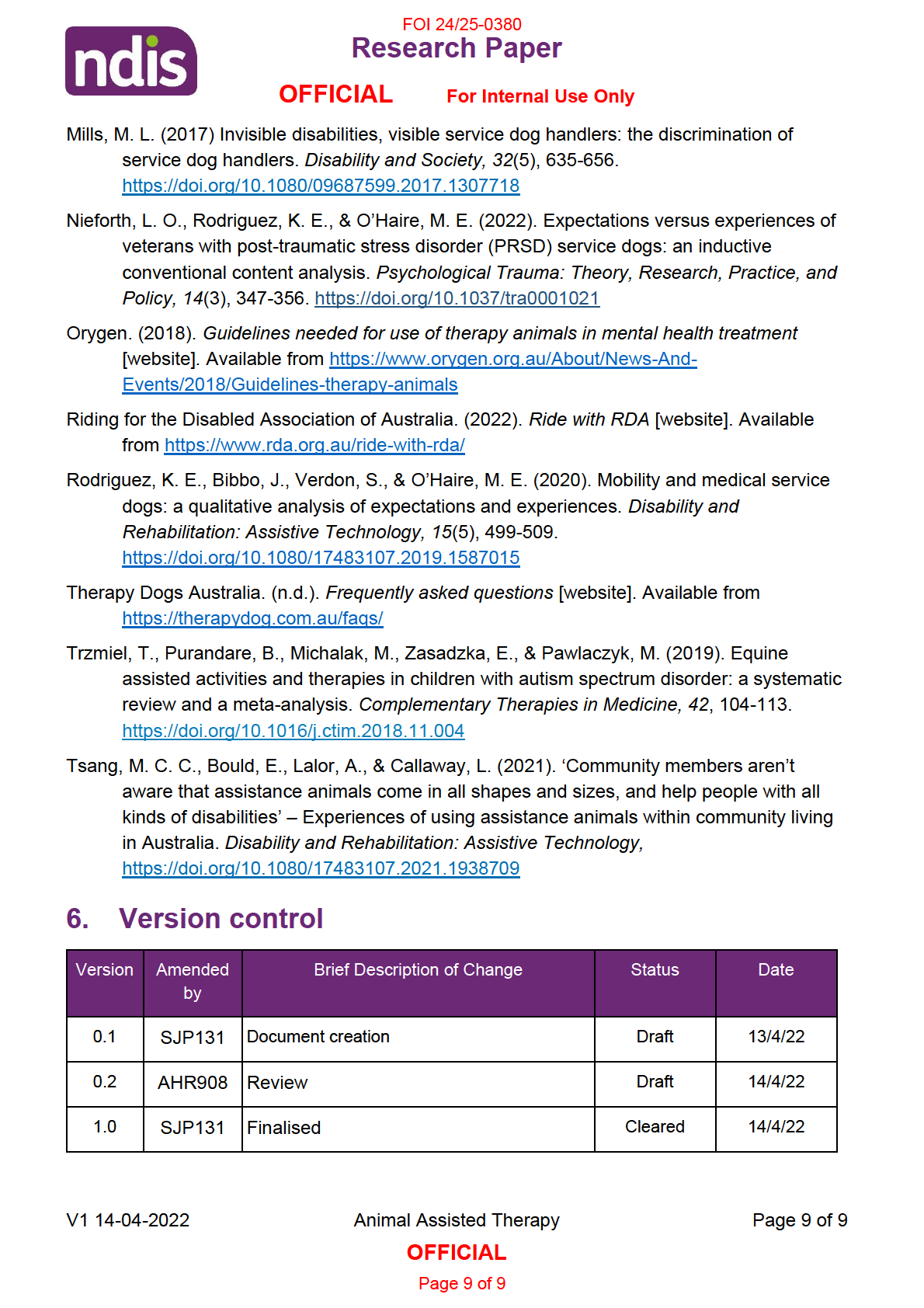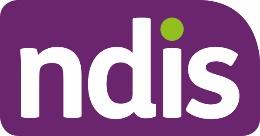
FOI 24/25-0380
DOCUMENT 11
Research Paper
OFFICIAL
For Internal Use Only
Animal Assisted Therapy and Assistance
Animals
The content of this document is OFFICIAL.
Please note:
The research and literature reviews collated by our TAB Research Team are not to be shared
external to the Branch. These are for internal TAB use only and are intended to assist our
advisors with their reasonable and necessary decision-making.
Delegates have access to a wide variety of comprehensive guidance material. If Delegates
require further information on access or planning matters, they are to call the TAPS line for
advice.
The Research Team are unable to ensure that the information listed below provides an
accurate & up-to-date snapshot of these matters
Research questions:
1. Are there best practice models for animal assisted therapy that promote client
independence and self-management?
2. What is the role of animal assisted therapy to promote capacity building that results in
independence after therapy has ended?
3. Is there evidence of stigma or prejudice with the use of assistance animals?
4. Is there evidence of negative outcomes when assistance animals draw unwanted attention?
Date: 14/4/2022
Requestor: S47F -
Endorsed by (EL1 or above):
Researcher: S47F - Personal
Cleared by: S47F - Personal
1.
Contents
Animal Assisted Therapy and Assistance Animals .................................................................... 1
1.
Contents ....................................................................................................................... 1
2.
Summary ...................................................................................................................... 2
3.
Animal Assisted Therapy .............................................................................................. 2
3.1
Regulation of animal assisted therapy ....................................................................... 2
V1 14-04-2022
Animal Assisted Therapy
Page 1 of 9
OFFICIAL
Page 1 of 9

FOI 24/25-0380
Research Paper
OFFICIAL
For Internal Use Only
3.2
Models of best practice using animal therapy to promote independence .................. 3
3.3
Capacity building using animal therapy ..................................................................... 3
3.4
Ending the therapeutic relationship ........................................................................... 5
4.
Assistance Animals ....................................................................................................... 5
4.1
Stigma and discrimination .......................................................................................... 5
5.
References ................................................................................................................... 8
6.
Version control .............................................................................................................. 9
2. Summary
This paper is a supplement to research completed by the Tactical Research Team in 2021 -
RES183 - Therapy Animals - Models of practice for ending involvement in therapy programs
V1.0.docx.
Animal assisted therapy (AAT) is not governed by legislation or industry regulations. AAT
needs to be adapted to individual client needs, therefore there is no model of best practise in
the literature particularly with respect to capacity building for independence. The long-term
efficacy of AAT after the cessation of the therapeutic relationship cannot be determined due to
a lack of information in the literature. It is also unclear how often AAT leads to a request for an
NDIS funded assistance animal as a result of dependence on the therapy animal.
People with a disability experience discrimination and research suggests that use of assistive
technology can lead to discrimination and stigma beyond the disability itself. Research has
shown that people with an invisible disability experience greater discrimination and stigma
when using assistance animals compared to individuals with a visible disability. However, both
groups report challenges and negative experiences as a result of taking their assistance
animal out in public. This includes personal questions, confrontation about access to venues
and people wanting to interact with the assistance animal. While there is limited data regarding
the long-term impact of these negative experiences, it has been reported that these
experiences can be so frustrating or upsetting that it can lead to not taking their assistance
animal out in public as a means to avoid these situations.
3. Animal Assisted Therapy
3.1 Regulation of animal assisted therapy
Therapy dogs are not required to meet any legislated standard in Australia, including
behaviour or hygiene standards (Friendly Dog Collar, 2022). After a broad search of state and
national literature, no industry regulations could be found.
V1 14-04-2022
Animal Assisted Therapy
Page 2 of 9
OFFICIAL
Page 2 of 9
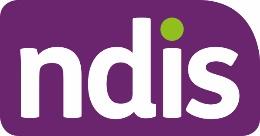
FOI 24/25-0380
Research Paper
OFFICIAL
For Internal Use Only
A search of Australian professional body websites, such as Australian Health Practitioner
Registration Agency, Australian Veterinary Association and Allied Health Professional
Association, revealed an absence of resources in the area of AAT.
It has been recognised by some members in the industry that best-practice regulations for AAT
are needed (Orygen, 2018). The National Centre of Excellence in Youth Mental Health
highlight that the absence of regulations make it vulnerable to poor practice for both users and
those delivering the service. Regulations would help the industry operate in a safe and ethical
manner based on evidence (Orygen, 2018).
Despite the lack of industry regulations, there are animal training organisations in Australia
offering courses and assessment certificates for practitioners who want to train their own dog
for use during AAT, such as Therapy Dogs Australia and Therapy Animals Australia. Therapy
Dogs Australia also offer yearly assessment to maintain their organisation’s accreditation
(Therapy Dogs Australia, n.d.).
An international search for regulations revealed Animal Assisted Intervention International
endeavouring to establish practice standards for the industry (AAII, 2019) and International
Society of Animal Assisted Therapy (ISAAT, n.d.) offering accredited training and education for
AAT. However, no international legislation or industry regulations for AAT were found.
3.2 Models of best practice using animal therapy to promote
independence
A search of the literature was unable to reveal a model of best-practice for animal assisted
therapy. A widely recognised definition of AAT is ‘goal directed interventions in which an
animal meeting specific criterion is an integral part of the treatment process’ (Dunlap, 2019).
AAT is considered an adaptive treatment model and is required to be flexible to tailor to
individual goals (Compitus, 2021). AAT is used to improve the social, emotional and cognitive
adaptive functioning of an individual and should be guided by goals and objectives laid out in a
formal treatment plan (Compitus, 2021; Evans and Gray, 2012). AAT is provided in addition to
existing practice models therefore, as practitioners work within their area of expertise of
professional practice, there are variations in how AAT is utilised in practice (Evans & Gray,
2012). As a result, the focus of research is often towards the outcomes of assisted animal
therapy rather than specifics around how the AAT was implemented (Compitus, 2021).
3.3 Capacity building using animal therapy
3.3.1 Why use animals?
It has been postulated that animals may facilitate the therapeutic alliance between client and
practitioner (Compitus, 2021). The basis of AAT is derived from theory of human-animal
interaction, which is the mutual relationship between humans and animals resulting in positive
physical and psychological health (Hill et al, 2020). The benefits of AAT is well represented in
the literature across a range of disabilities and diagnoses, including for hearing and vision
V1 14-04-2022
Animal Assisted Therapy
Page 3 of 9
OFFICIAL
Page 3 of 9
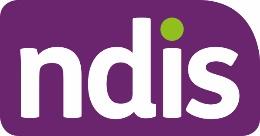
FOI 24/25-0380
Research Paper
OFFICIAL
For Internal Use Only
impairment, physical disability, epilepsy and diabetes alert, autism spectrum disorder, post-
traumatic stress disorder and other psychosocial disabilities (Department of Psychology and
Counselling, School of Psychology and Public Health, 2016; Kourkourikos et al, 2019).
Engaging children with autism spectrum disorder to be actively involved in their therapy can be
difficult and traditional reward systems, such as tokens or stickers, have limited success in
sustaining engagement and positive behaviour (Hill et al, 2020). A systematic review
examining the efficacy of AAT for children with autism spectrum disorder has shown moderate
effect sizes for positive outcomes such as behaviour modification, emotional wellbeing and
autism spectrum symptoms (Burgoyne et al, 2014). Further studies have shown improvement
in social engagement for these children, including increased verbal and non-verbal
communication, when interacting with a therapy dog (Hill et al, 2020; Kourkourikos et al, 2019).
Research has also demonstrated that equine therapy may improve social functioning, reduce
maladaptive behaviour and increase trunk stability for children with autism spectrum disorder
(Trzmiel et al, 2019).
Social and emotional benefits from AAT have been attributed to the human-animal bond
whereby the non-judgemental nature of animals encourages people to seek support and
companionship from animals (Ferrell & Crowly, 2021). AAT may act as a motivator to attend
and engage in therapy, particularly for children or people with a psychosocial disorder who
might increase their attention and participation with the therapy program (Hill et al, 2020).
Animal therapy can also have physical benefits for individuals with physical challenges,
including improving fine motor skills from grooming or strengthened muscles and improved
coordination through horse riding (Kourkourikos, 2019; Riding for the Disabled, 2022).
3.3.2 Canine-assisted animal therapy
Dogs are the most common animal used for animal assisted therapy, possibly due to their
ability to be bred to certain physical traits, temperament and willingness to be around people
and the historical point, now outdated, that dogs were the only species to have legal
recognition as an assistance animal (La Trobe University, 2016).
As detailed in 3.1 Regulation of animal assisted therapy, there are training providers in
Australia who will train an individual’s dog to be a therapy dog for clinical work. General canine
assisted therapy programs have not been discovered through this research, possibly because
a therapy dog’s work with a client depends on the skills of the practitioner and needs of the
client (Compitus et al, 2021; Evans & Gray, 2012). A literature search also has not identified
research regarding long term maintenance of capacity building gains through canine assisted
therapy, therefore the long-term efficacy of canine assisted therapy programs cannot be
determined.
3.3.3 Riding for the Disabled
Riding for the Disabled provides equine therapy for people with a disability. Resources
provided by Riding for the Disabled indicate they cater to individuals with a range of intellectual
and physical disabilities, including cerebral palsy, autism spectrum disorder and spina bifida
V1 14-04-2022
Animal Assisted Therapy
Page 4 of 9
OFFICIAL
Page 4 of 9
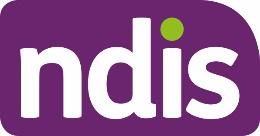
FOI 24/25-0380
Research Paper
OFFICIAL
For Internal Use Only
(Riding for the Disabled Association of Australia, 2022). The organisation indicates there are
capacity building benefits across physical, social, psychological and educational domains
(Riding for the Disabled, 2022), however there is no information about their specific riding
programs such as how often or how many therapy sessions are required to achieve the stated
benefits. Also, the organisation does not provide information on their website about how
capacity building gains are maintained after cessation of the AAT program.
3.4 Ending the therapeutic relationship
While there is a broad range of literature describing the positive outcomes of animal assisted
therapy, there is little research in the area of ending the therapeutic relationship. One study,
Compitus et al (2021), addresses the need to prepare the client for the end of the therapeutic
relationship however does not address how the end of therapy is managed in a way that
ensures capacity building gains are maintained. It was noted that for clients with strong
attachment to the animal, or a history of insecure attachment, ending AAT needed to occur
after emotional regulation skills had been developed so there was not a sense of loss when
separating from the therapy animal (Compitus et al, 2021).
A broad literature search was unable to discover longitudinal research regarding maintenance
of the skills developed during animal assisted therapy, therefore no conclusions can be made
with respect to the long-term efficacy of animal assisted therapy. Also, research regarding how
often AAT leads to a request for an assistance animal on a permanent basis could not be
sourced. Therefore, it cannot be determined how often an individual may become dependent
on an assistance animal to maintain their functional capacity gains.
4. Assistance Animals
4.1 Stigma and discrimination
There is a rich volume of literature regarding the many benefits, including increased emotional
and functional capacity, for people who are supported by an assistance animal (Nieforth et al,
2021; Rodriguez et al, 2020; Tsang et al, 2021). Assistance animals can support people
across a range of ‘visible’ and ‘invisible’ disabilities, such as blindness, hearing impaired,
autism spectrum disorder, epilepsy and psychosocial disabilities (Kourkourikos, 2019; Tsang
et al, 2021). There is increasing research exploring challenges that result from using an
assistance animal in the community, particularly for people with an ‘invisible’ disability,
including stigma and discrimination (Nieforth et al, 2021; Rodriguez et al, 2020; Tsang et al,
2021).
Mills (2017) conducted research specifically whether the visibility of a disability impacts the
assistance animal user’s experience with respect to discrimination. It was found that 61.1% of
respondents with an invisible disability reported everyday discrimination, compared to 39.7%
with a visible disability. Invasive questions were reported by 76.9% of respondents with an
invisible disability and 56.5% of respondents with a visible disability. Unwanted attention was
V1 14-04-2022
Animal Assisted Therapy
Page 5 of 9
OFFICIAL
Page 5 of 9
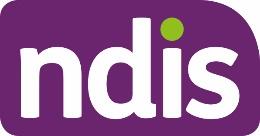
FOI 24/25-0380
Research Paper
OFFICIAL
For Internal Use Only
received by 52.9% of individuals with an invisible disability compared to 29.4% of individuals
with a visible disability. Use of assistance animals for people with an invisible disability means
the disability is no longer concealed but as the disability is still not easily identified it may make
these assistance animal users more vulnerable to discrimination due to scepticism about the
legitimacy of their need for the assistance animal (Mills, 2017).
Although individuals with an invisible disability may be more likely to experience discrimination
when using their assistance animal in public, discrimination is still reported by individuals with
a visible disability. In a 2020 study by Rodriguez et al investigating the experience of 64 people
with an assistance dog – disabilities included epilepsy, musculoskeletal disorder and
neuromuscular disorder – only 30% said there were no negative points to having an
assistance animal. Challenges described by the participants included public access and
education (44% of the cohort) and negative attention received from people while in public
(20%). Participants cited issues such as people patting or distracting their assistance dog,
people making assumptions about their functional capacity, and the lack of understanding that
assistance animals can be utilised for people other than blind or hearing impaired.
Supporting these findings, Tsang et al (2021) found with a cohort of 112 Australian participants
with a disability – disabilities included psychosocial disability, autism spectrum disorder,
physical disability, diabetic alert, hearing, seizure response and other neurological – 70% of
participants experienced both positive and negative experiences in the community with their
assistance animal. Almost all participants experienced being asked why they had an
assistance animal. Apart from the hearing-impaired participants, at least 50% of the other
disability groups reported being verbally discriminated (being insulted or joked about). Non-
verbal discrimination, such as being stared at or path avoidance, was reported at higher rates
particularly for people with autism and seizure response dogs. Unwanted attention included
people distracting the dog or trying to pat the dog, being asked personal questions about their
disability and unwanted social interactions with strangers were reported to sometimes be a
barrier to accessing the community with their assistance dog. Further challenges reported,
explained in part that it might occur when a common or expected dog breed is not used as the
assistance animal, were being refused access to taxis, bus drivers not stopping when they see
the assistance dog, difficulty booking accommodation, and accessing retail and hairdressers.
A further study by Nieforth et al (2022) explored the experiences of 69 US Veterans with post-
traumatic stress disorder who had an assistance dog and found 43% received too much
attention and were asked personal questions by strangers, 25% experienced misinformation
about service dogs including being accused of having the legitimacy of their dog questioned,
and 6% reported stigma when out in the community.
Long term implications from these negative experiences are not well documented with respect
to whether they may trigger a relapse (or worsening) of symptoms for people with a
psychosocial disability. However, it has been stated there is a need to be assertive when in
public with an assistance animal as there may be confrontations when trying to access venues
or transport, and these confrontations may cause considerable stress for people with an
V1 14-04-2022
Animal Assisted Therapy
Page 6 of 9
OFFICIAL
Page 6 of 9
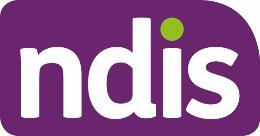
FOI 24/25-0380
Research Paper
OFFICIAL
For Internal Use Only
anxiety disorder (Department of Psychology and Counselling, School of Psychology and Public
Health. (2016). Mills (2017) and Tsang et al (2021) both reported some individuals with an
assistance animal become so bothered by the personal questions and difficulties with public
access that they make the personal choice to not take their assistance animal in public.
Therefore, it seems reasonable to conclude that these people could experience worsening
symptoms of their psychosocial disorder as time goes on.
V1 14-04-2022
Animal Assisted Therapy
Page 7 of 9
OFFICIAL
Page 7 of 9
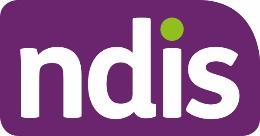
FOI 24/25-0380
Research Paper
OFFICIAL
For Internal Use Only
5. References
Animal Assisted Intervention International. (2019).
Animal Assisted Intervention International
Standards of Practice. Available from https://otaus.com.au/publicassets/80cfd523-2030-
ea11-9403-005056be13b5/AAII-Standards-of-Practice.pdf
Burgoyne, L., Dowling, L., Fitzgerald, A., Connolly, M., Browne, J. P., & Perry, I. J. (2014).
Parents’ perspectives on the value of assistance dogs for children with autism spectrum
disorder: A cross sectional study.
BMJ Open, 4, e004786. Doi:10.1136/bmjopen-2014-
004786
Compitus, K. (2021). The process of integrating animal-assisted therapy into clinical social
work practice.
Clinical Social Work Journal, 49, 1-9. https://doi.org/10.1007/s10615-019-
00721-3
Department of Psychology and Counselling, School of Psychology and Public Health. (2016).
Reviewing assistance animal effectiveness: literature review, provider survey,
assistance animal owner interviews, health economics analysis and recommendations.
Final report to National Disability Insurance Agency. La Trobe University.
Dunlap, K. B., Miller, K. D., & Kinney, J. S. (2021). Recreational therapists’ practice,
knowledge, and perceptions associated with animal-assisted therapy.
Therapeutic
Recreation Journal, LV(4), 384-398. https://doi.org/10.18666/TRJ-2021-V55-I4-11058
Evans, N., & Gray, C. (2012). The practice and ethics of animal-assisted therapy with children
and young people: is it enough that we don’t eat our co-workers?
British Journal of
Social Work, 42, 600-617. https://doi.org/10.1093/bjsw/bcr091
Ferrell, J., & Crowley, S. L. (2021). Emotional support animals: A framework for clinical
decision-making.
Professional Psychology: Research and Practice, 52(6), 560-568.
http://dx.doi.org/10.1037/pro0000391
Friendly Dog Collars. (2022). Assistance dogs in Australia [website]. Available from
https://friendlydogcollars.com.au/blogs/news/the-truth-about-assistance-dogs-and-
service-dogs-in-australia
Hill, J. R., Ziviani, J., & Driscoll, C. (2020). “The connection just happens”: Therapists’
perspectives of canine-assisted occupational therapy for children on the autism
spectrum.
Australian Occupational Therapy Journal, 67, 550-562.
https://DOI.org/10.1111/1440-1630.12680
International Society of Animal Assisted Therapy. (n.d.).
About [website]. Available from
https://isaat.org/about/
Koukourikos, K., Georgopoulou, A., Kourkouta, L., & Tsalogllidou, A. (2019). Benefits of animal
assisted therapy in mental health.
International Journal of Caring Sciences, 12(3), 1898-
1905.
V1 14-04-2022
Animal Assisted Therapy
Page 8 of 9
OFFICIAL
Page 8 of 9
